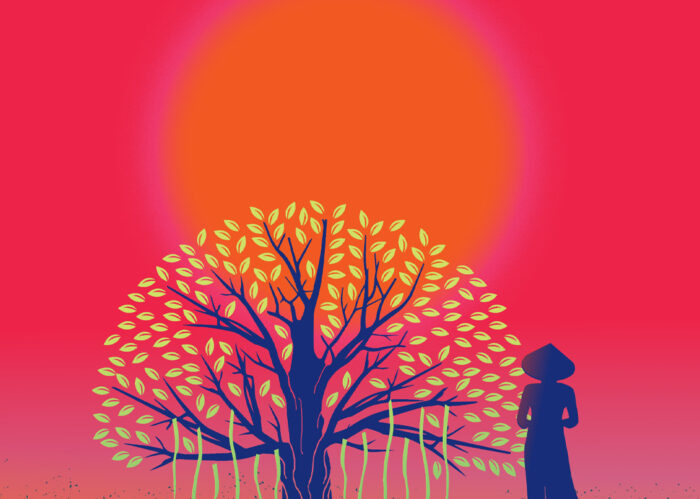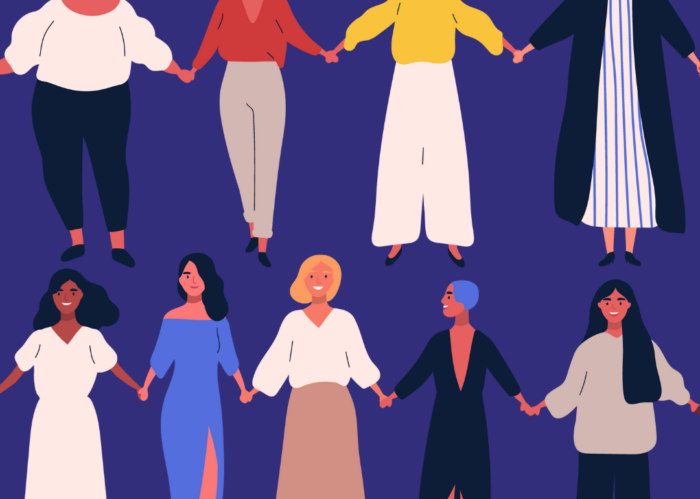Why I Wrote It: A Note from Jim Grimsley
Jim Grimsley on his new book, How I Shed My Skin: Unlearning the Lessons of a Racist Childhood, which will be published on April 14.
 I have been watching episodes of Dragnet, the TV series from the late 1960s, a comforting view of the Los Angeles police department that appears, in retrospect, much like propaganda. On the show, Detective Joe Friday was prone to giving lectures on decency and morality. He narrated each episode in simple speeches from which most emotion had been subtracted and shamed criminals into changing their ways through his sheer dull righteousness. Just the facts, Friday would remind the people he interviewed. Just the facts.
I have been watching episodes of Dragnet, the TV series from the late 1960s, a comforting view of the Los Angeles police department that appears, in retrospect, much like propaganda. On the show, Detective Joe Friday was prone to giving lectures on decency and morality. He narrated each episode in simple speeches from which most emotion had been subtracted and shamed criminals into changing their ways through his sheer dull righteousness. Just the facts, Friday would remind the people he interviewed. Just the facts.
“The story you have seen is true.” Each episode ended with this phrase, along with, “The names have been changed to protect the innocent.” Afterward would come the reading of the trial verdict, while on screen the criminal stood as if posing for a mugshot, uncomfortable and chagrined.
In real life, during the same decade as that show, in a small North Carolina town I lived through school integration, and in attempting to write the story of that time, I have reminded myself of Friday’s admonition of serving up just the facts. And that’s what I have done, as best I can recall them. I, too, have changed the names of those involved in the story, though my goal is to protect people whom I would describe as neither guilty nor innocent. “Good people,” I will call them, all of them, whether black or brown or white.
 I was entering the sixth grade in 1966 when the system of segregated education for whites and blacks began to crumble. Through the first years of integration that followed, I experienced firsthand the change that saw the end of separate school systems and the subsequent flight of white students to private schools, what one might call the privatization of segregation.
I was entering the sixth grade in 1966 when the system of segregated education for whites and blacks began to crumble. Through the first years of integration that followed, I experienced firsthand the change that saw the end of separate school systems and the subsequent flight of white students to private schools, what one might call the privatization of segregation.
My hometown was hardly extraordinary, certainly neither better nor worse than any other part of the country. It had a checkered history, of course: one part of the community had once held the other part as slaves, and Jones County had endured lynchings, murderous gangs and a war. No, the placid, quiet façade the town presented could not be taken at face value. It would be easy to say I had no awareness of the various tensions around me, had no sense of what parts of our society were broken, no understanding of old wounds still festering decades later. In truth, it would be more accurate to say that I accepted these aspects of my home as a given and had little notion of their import. I knew the facts but was ignorant of the world they shaped.
During my childhood, as I read science fiction novels and listened to 45 rpm records, the white adults around me fretted that soon we would have to share restaurants and bathrooms with black people. They blamed it on something called integration. Now, as an adult, I realize that we white people who dominated the nation were forced to confront the fact that we had collectively, systematically and violently denied the equality of non-white people in general and of black people in particular throughout our existence. At the time, however, I hardly understood the outlines of what was happening and only could see that the change was unsettling to all the people I knew.
All this remained abstract to me until African-American students started attending my elementary school. Suddenly the world came into focus, and I began to understand.
I set out to write a book covering that era because of what I learned about myself and my town in the subsequent years. The core of the story I’ve written is my own, my evolution from bigot to recovering bigot. In my early life, from otherwise good people, I learned harsh prejudice against African-Americans, supported by a carefully constructed system of racist laws. The ideas that supported segregation began to collapse inside me once I met black people and began to understand their conception of justice and injustice. In coming to terms with the black students who became my schoolmates and later my friends, I was doing the work of the era, same as everyone around me.
The story of the 1960s has a feeling of allegory in some ways, the decade beginning with the shadow of nuclear doom, followed by a massive surge of people-driven movements that unsettled the country at all levels. People were marching, sitting-in, rioting, boycotting, striking. As I aged, the story began to clarify. People were rising up and demanding an end to what was politely termed discrimination but was actually the leftover bondage from slavery, a state that had never entirely ended even though the law freeing slaves had been on the books for a century. Women were reacting to the fact that their lives were driven by the men around them, making of them a kind of chattel, too. Gay and lesbian people were wakening to a sense that another kind of life, out of the closet, might be possible. Young people, old people, people of all colors, took to the streets, sometimes in violence and sometimes in peace.
 What happened in my hometown was a ripple outward from one of those waves of people. The Civil Rights movement insisted on integration of society and an end to racially separate schools, something the Supreme Court had ordered years before but which was only becoming reality in my school in 1966. So the drama unfolded. For the first time, two racially different sets of children walked into the same school, strangers though they had lived side by side all their lives. Real change had finally begun.
What happened in my hometown was a ripple outward from one of those waves of people. The Civil Rights movement insisted on integration of society and an end to racially separate schools, something the Supreme Court had ordered years before but which was only becoming reality in my school in 1966. So the drama unfolded. For the first time, two racially different sets of children walked into the same school, strangers though they had lived side by side all their lives. Real change had finally begun.
A person can be misguided, can act from impulsive motives, can give in to baser temptations or bear a tragic flaw, but at heart that person can still be “good.” But can a good person be a racist? Does goodness survive that terrible flaw?
From my own experience I can answer that the people I knew in Jones County, racist all of them, were undoubtedly good. There were people who helped my family and me directly, sometimes financially, more often with acts of kindness. Their goodness was visible and could not be denied.
But the story I am telling is about my own racism, the lore of inferiority in black people that I was taught to think of as fact from as early as I can remember. I was born into a racist society, and though I thought of myself as a “good” person, I was as much a racist as anyone I knew.
 Why would one label oneself with this word, racist? To show that it can be done and survived; to show that it’s not so hard to admit this failing; but mainly to move past it. If I do not recognize that I have these prejudices programmed into me and, therefore, do not act against it, what further harm will I do?
Why would one label oneself with this word, racist? To show that it can be done and survived; to show that it’s not so hard to admit this failing; but mainly to move past it. If I do not recognize that I have these prejudices programmed into me and, therefore, do not act against it, what further harm will I do?
Our goodness, of course, is only part of us, and there are limits to it and borders around it. The white people in Jones County, who I knew as friends and revered as teachers and elders, hardly seemed the kind who might take part in a lynching, and yet they or their ancestors — or me or my ancestors, all of who surely were good people — had done exactly that. Some of my relatives were no doubt burning crosses. Though granted a certain level of education, they remained ignorant when it came to anyone or anything outside their kin, and most especially someone of a different color and culture. These truths, too, are just the facts.
In my hometown we continued to whisper the same falsehoods about African-Americans years after we should have known better. But facts can change, and some of us did change during those years. Black and white, we met at school and recognized fundamental commonalities in one another. A force as powerful as prejudice against a stranger is never entirely erased, but some of us took a step forward, and then another. While federally mandated integration failed to end our differences, it gave some of us the gift of finally knowing each other, of even becoming friends.
For me, that change began on a late summer morning many years ago, in a classroom with a high ceiling and rows of fluorescent lights. I thought I was ready for the school year to begin, when into my sixth grade classroom walked three girls who had decided to change the world.
-
Overall Score
Reader Rating: 0 Votes



